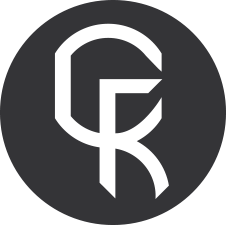Welcome to CrossFit Rife! As a fitness trainer, I’m always looking for ways to help my clients reach their health and wellness goals. One tool that I frequently recommend is the sauna.
Saunas are not new
Saunas have a long history of use in various cultures, and are now found in homes, gyms, and standalone facilities. A traditional sauna is a wood-lined room heated to a high temperature, usually between 80°C and 100°C. You can also add humidity by pouring water on hot rocks inside the sauna. However, most saunas use a dry heat, with humidity levels below 20%. Infrared saunas are also becoming increasingly popular.
Using a sauna can provide a number of health benefits, including:
- Improved cardiovascular function
2. Enhanced immune system
3. Reduced muscle soreness and tension
4. Weight loss
5. Improved sleep
Saunas are linked to cognitive health
Sauna use has also been linked to a lower risk of dementia and Alzheimer’s disease, as well as improvements in pain and range of motion for those with rheumatoid arthritis and ankylosing spondylitis. Additionally, saunas may help reduce chronic pain, improve depression symptoms, and decrease inflammation and stress hormone levels.
The benefits of sauna use on heart health are particularly impressive. Research has shown that sauna use can lower the risk of sudden cardiac death by 63% in men, and may improve symptoms and exercise tolerance in those with heart failure. It can also improve oxygen flow to the heart muscle in those with coronary artery disease, lower blood pressure in those with hypertension, and improve walking endurance in those with peripheral artery disease. Sauna use has also been linked to an improved cholesterol profile and reduced risk of stroke.f
While saunas can help with weight loss by causing the body to sweat and lose water weight, it’s important to remember that this is only temporary. To achieve lasting weight loss, a healthy diet and regular exercise are still essential.
Differences between Infrared and Wet saunas
We get a ton of questions on the different types of saunas and if one is better than the other. Infrared and wet saunas are two different types of saunas that provide different experiences and benefits. Here are some of the key differences between the two:
- Heat source: The main difference between infrared and wet saunas is the way they produce heat. Infrared saunas use infrared heaters to emit light that is absorbed by the body, while wet saunas use heated rocks or steam to raise the temperature.
- Temperature and humidity: Infrared saunas typically operate at lower temperatures (around 120-150°F) than wet saunas (around 160-200°F), but they can still make you sweat due to the infrared light penetrating the skin. Wet saunas have higher humidity levels due to the presence of steam or water, which can make the air feel warmer and more moist.
- Installation and maintenance: Infrared saunas can be easier to install and maintain than wet saunas because they don’t require plumbing or a drainage system. They also don’t produce steam, which can cause moisture damage to the walls and ceiling over time.
- Health benefits: Both types of saunas offer various health benefits, but they work in different ways. Infrared saunas are believed to help with detoxification, relaxation, pain relief, and improved circulation, while wet saunas are thought to help with respiratory issues, skin health, and relaxation.
- Personal preference: Ultimately, the choice between an infrared or wet sauna comes down to personal preference. Some people prefer the dry heat of an infrared sauna, while others enjoy the moist heat of a wet sauna. It’s also worth considering factors like cost, space requirements, and availability when making your decision.
Sauna Before or After training?
So do you hop in the sauna before or after training? Sauna use before or after training can have different effects on the body, and the best choice for you may depend on your individual goals and circumstances. Here are some things to consider when deciding whether to sauna before or after training:
- Sauna before training: Sauna use before training can help to increase blood flow, warm up muscles, and enhance flexibility. This can help to prepare the body for exercise and reduce the risk of injury. However, it’s important to note that spending too much time in a sauna before exercise can lead to dehydration and decreased performance, so it’s important to stay hydrated and not overdo it.
- Sauna after training: Sauna use after training can help to aid in recovery and reduce muscle soreness. The heat can help to increase blood flow and oxygenation to the muscles, which can promote healing and reduce inflammation. Additionally, sauna use after training can help to promote relaxation and reduce stress.
Ultimately, the decision of whether to sauna before or after training may depend on your individual goals and circumstances. If you are training for a competition or high-intensity workout, it may be best to use the sauna after training to aid in recovery. If you are looking to improve flexibility or warm up before a workout, sauna use before training may be more beneficial.
To get the most out of your sauna sessions, be sure to stay hydrated, listen to your body, and follow proper protocol. Start with a lower heat and shorter duration, gradually working up as your body becomes accustomed to the heat. And be sure to cool down and rehydrate as needed.
I hope this information has been helpful in understanding the benefits of sauna use and how it can be incorporated into your fitness routine. As always, be sure to consult with a healthcare professional before starting any new health or wellness program.





